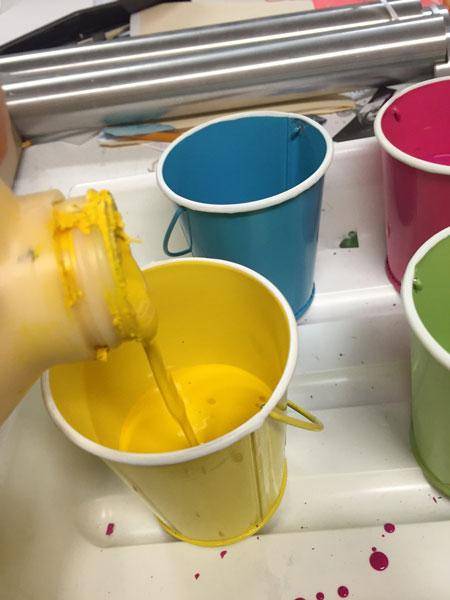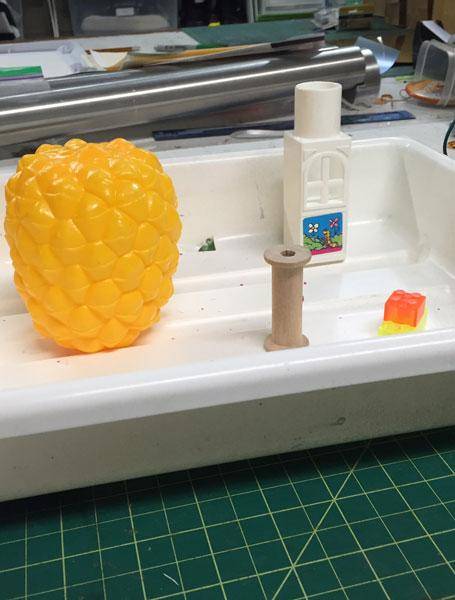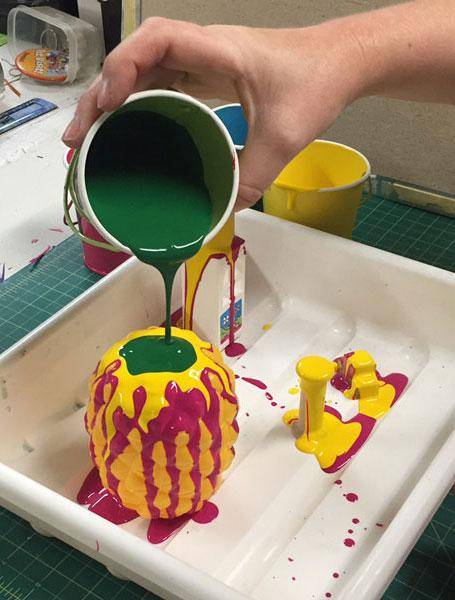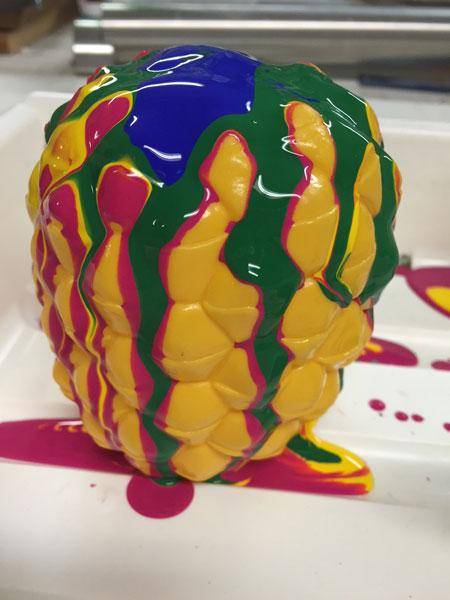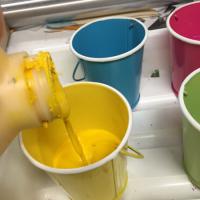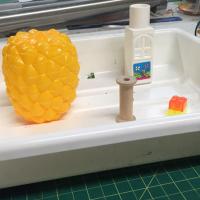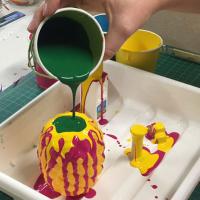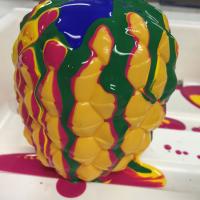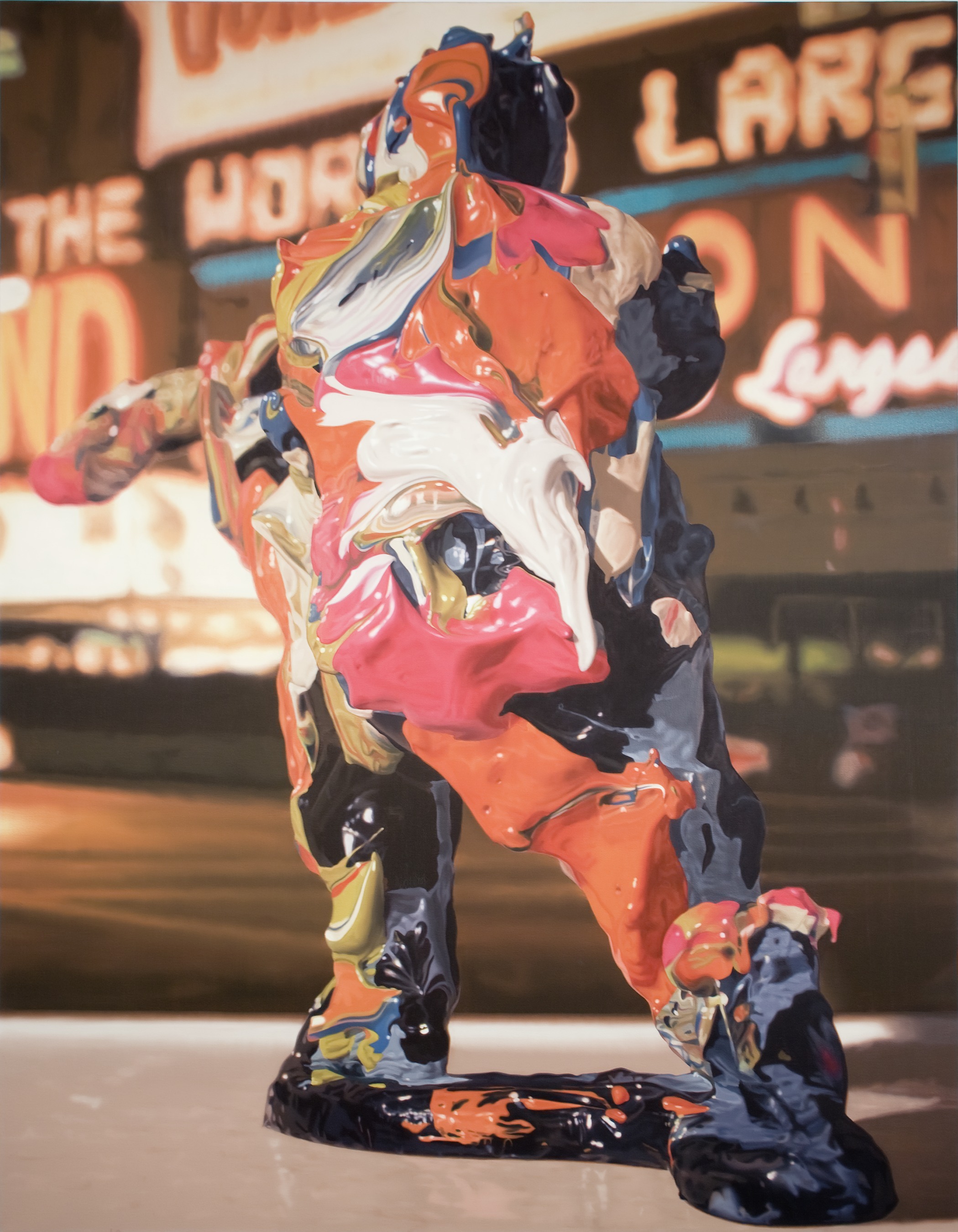
If
Richard Patterson, England
1999
Oil paint
Collection of Vicki and Kent Logan, fractional and promised gift to the Denver Art Museum, 2001.808
Children discover what happens when paint drips over a 3-D form. Pouring one color at a time, children see the effect of layering colors.
Designate a space that would allow students to explore with paints… this might get messy, use smocks! Model this as a small group before placing in a self-guided area.
- Invite students to choose a figurine (ex: recycled items).
- Have the young artists place figurines in a tray.
- Provide students with small cups of paint (thick tempura paint will adhere to the form best).
- Encourage students to pour the paint over the figurines one color at a time
- Ask questions to guide their exploration and to encourage creative thought and vocabulary.
Guiding questions
- What shapes do the paints make?
- What happens when the colors overlap?
- Where do you see colors swirling?
- How can you tell which color was poured first? Last?
- How is your art the same as/different than the art of another student?
TIP: Use small paper cups for this exploration. Young artists will enjoy dripping the paint and using these small cups will keep it manageable for you!
Related Creative Activities
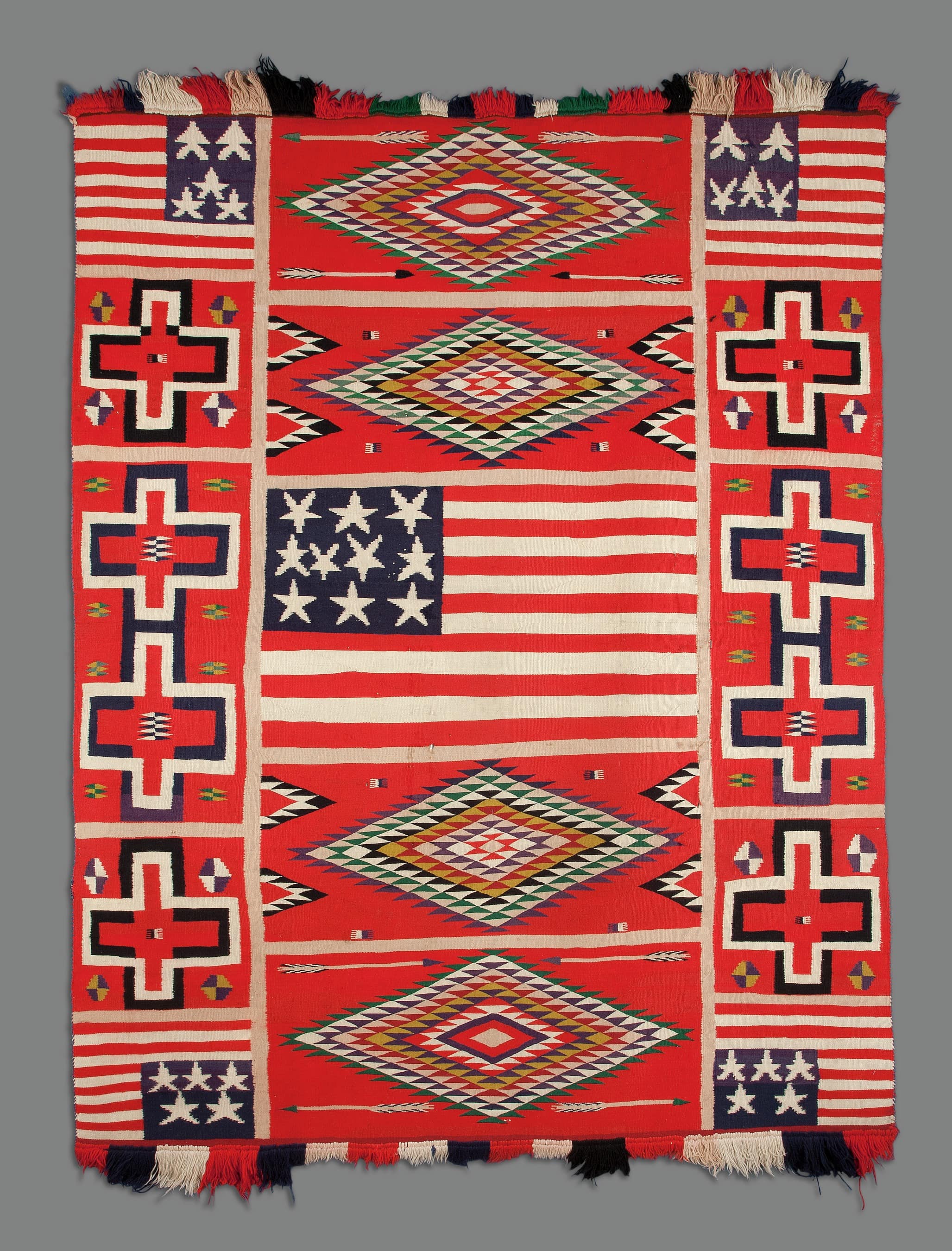
Art Exploration
Weaving with Various Materials
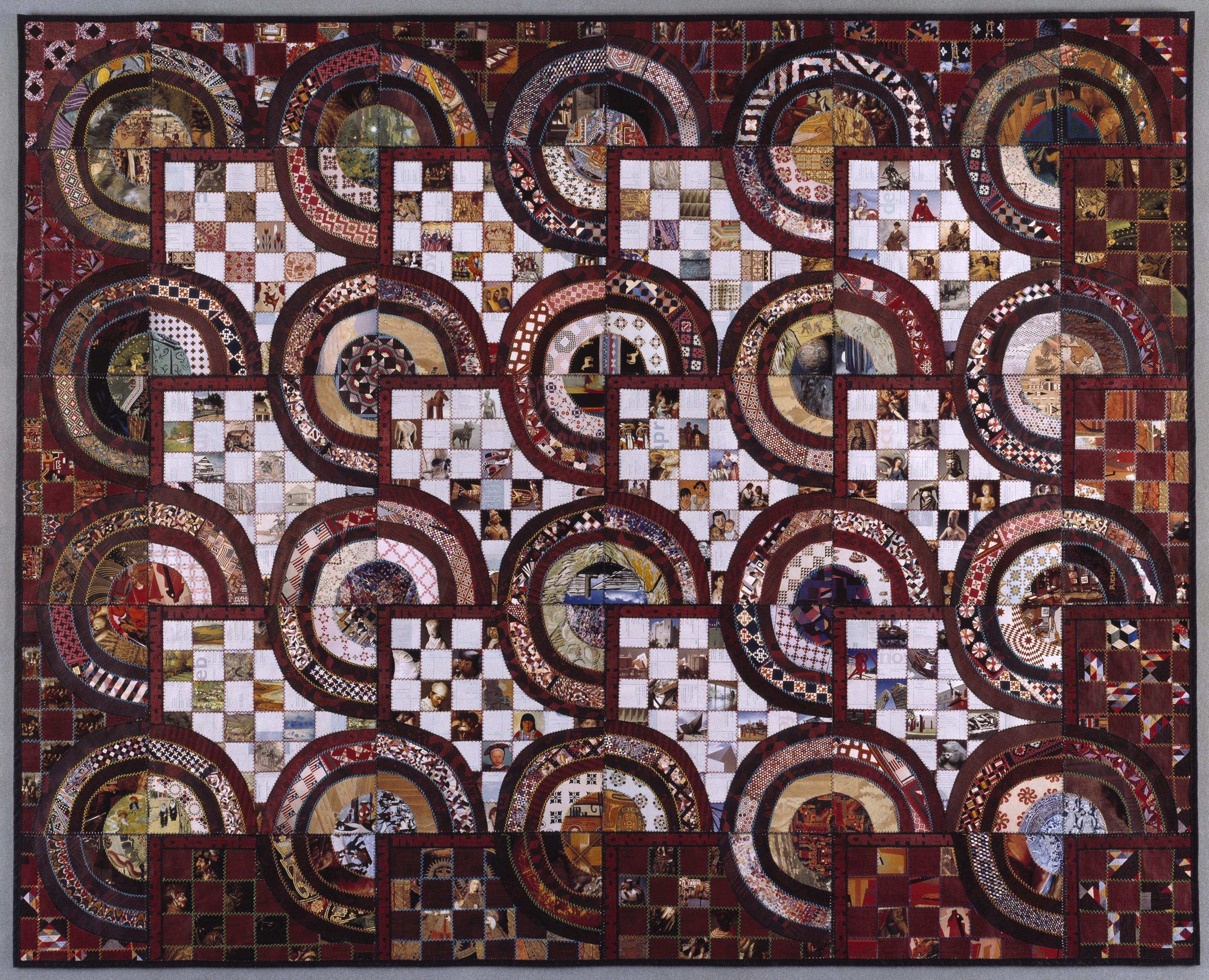
Art Exploration
Collage with Glue, Paper, and Tissue
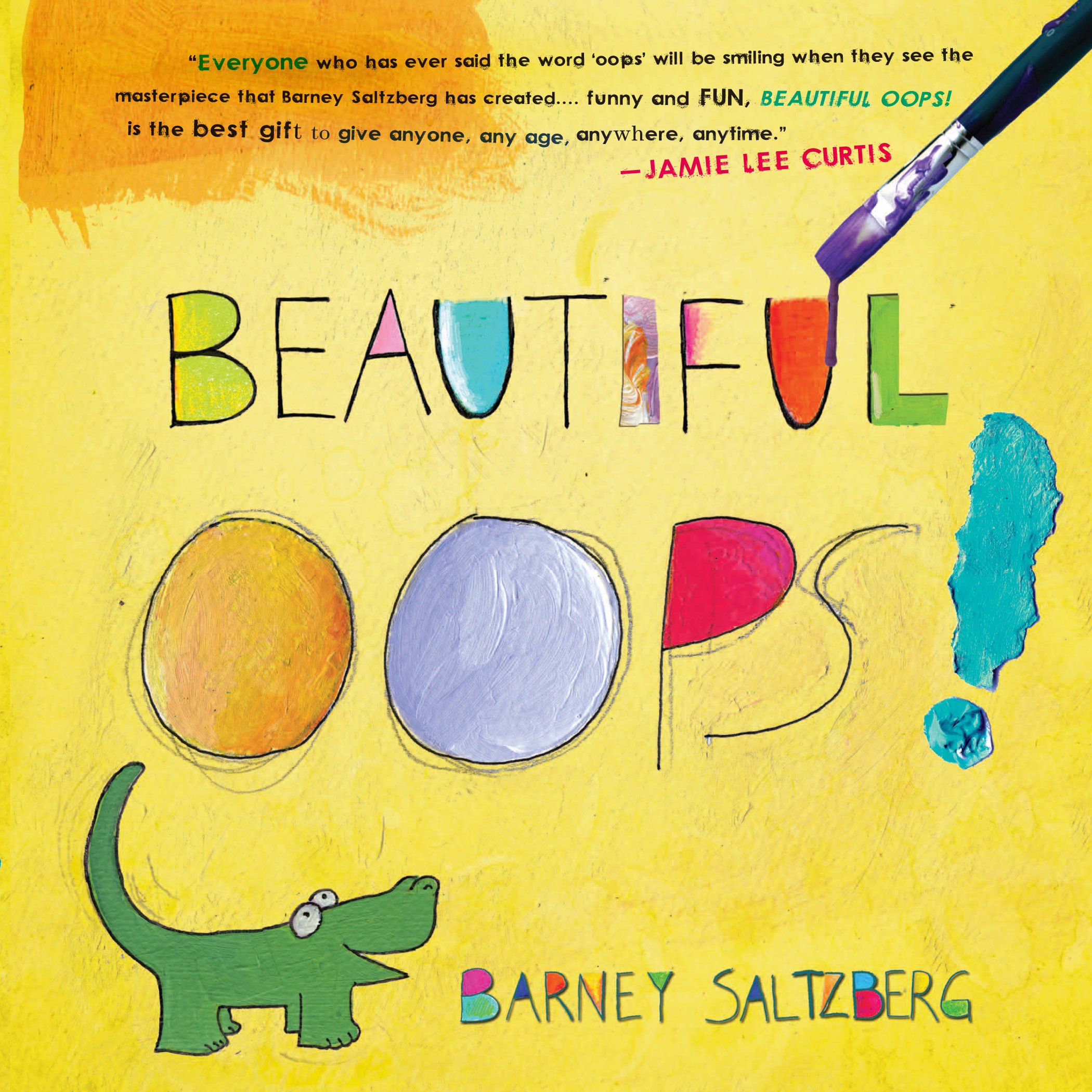
Book Recommendation
Turn a Mistake Into Something Beautiful
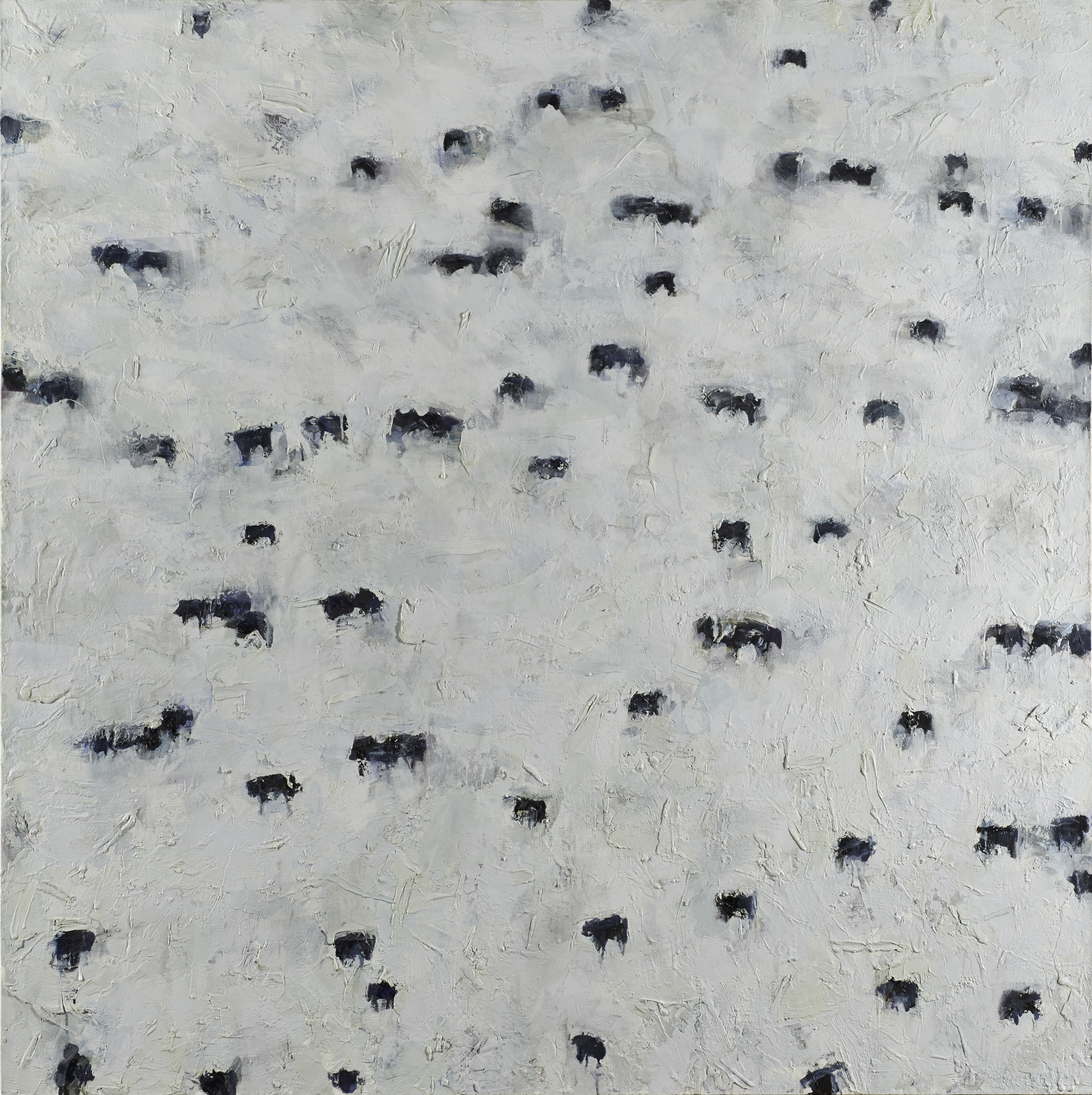
Art Exploration
Tinker with Mark Making Tools
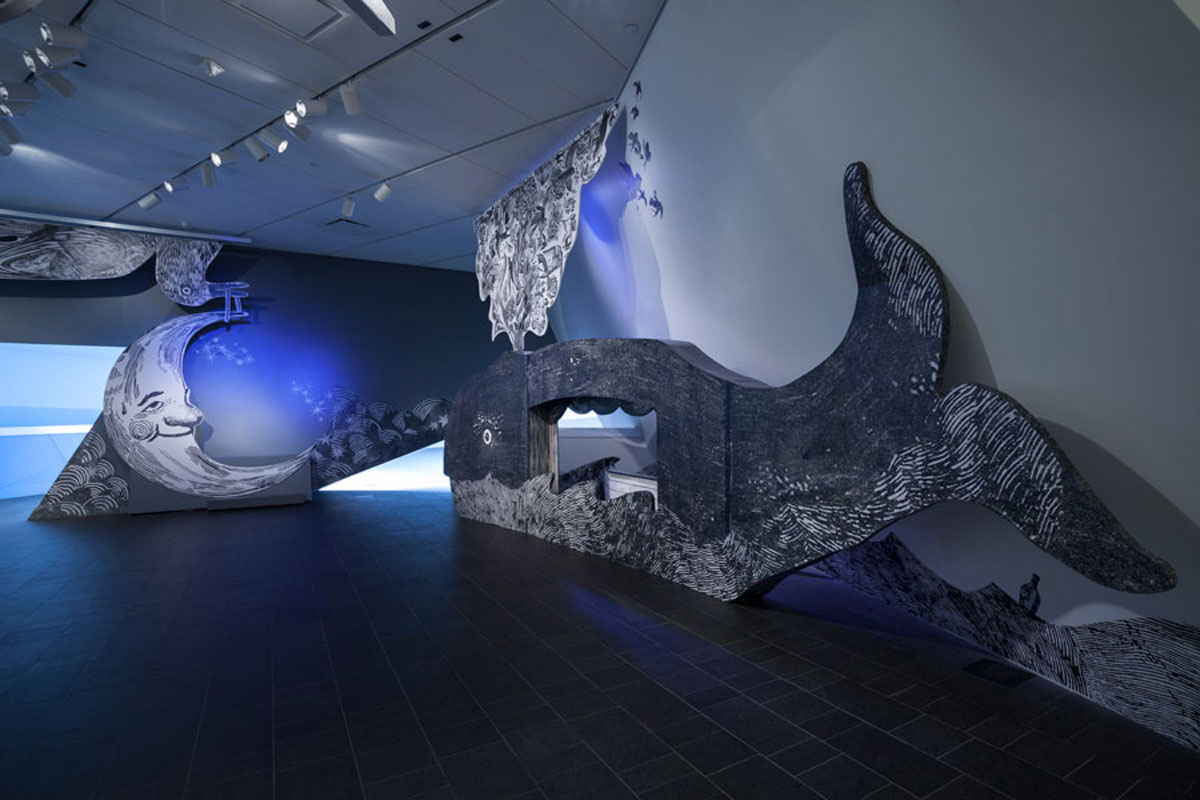
Art Exploration
Seeing Texture
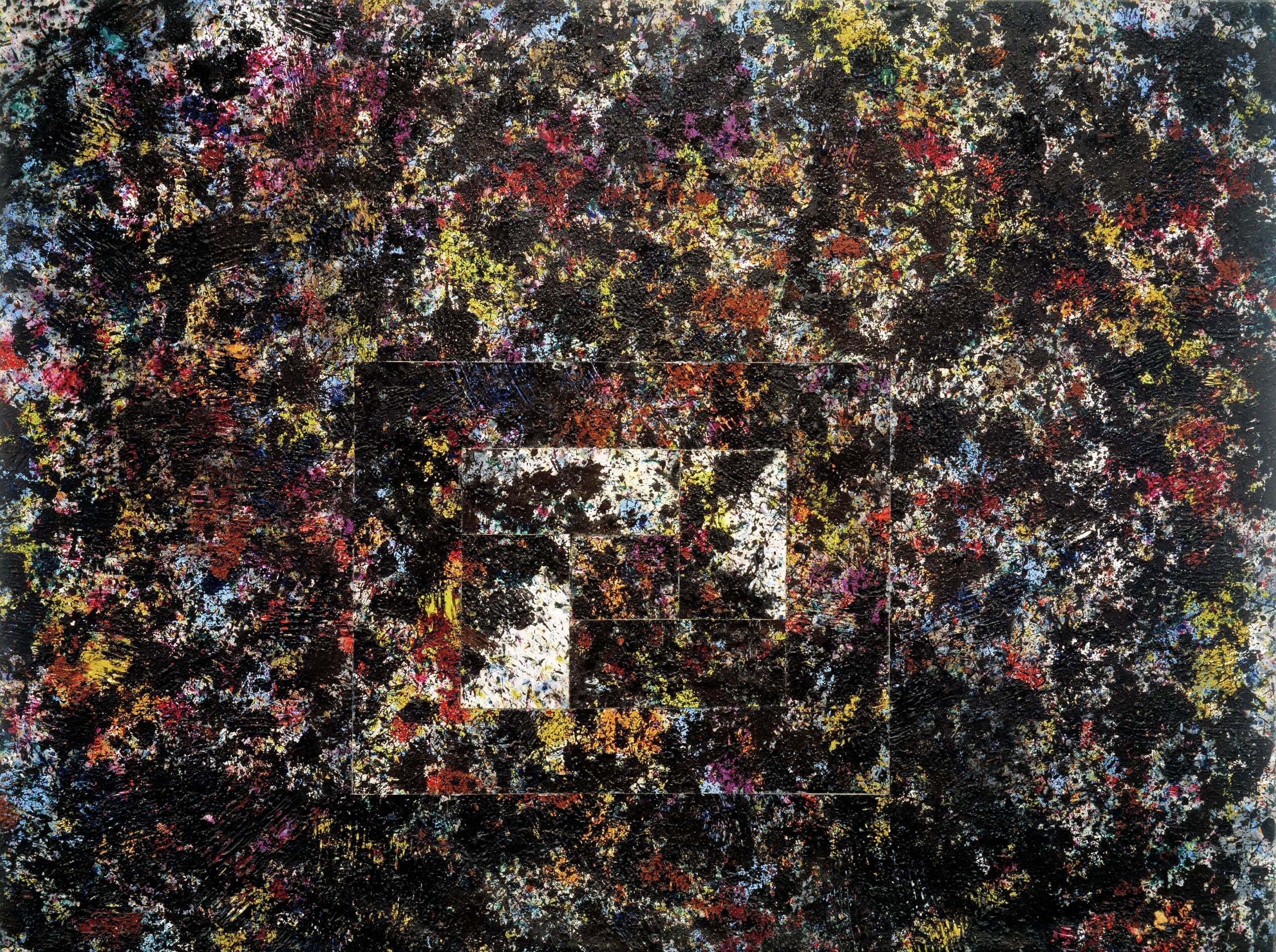
Art Exploration
